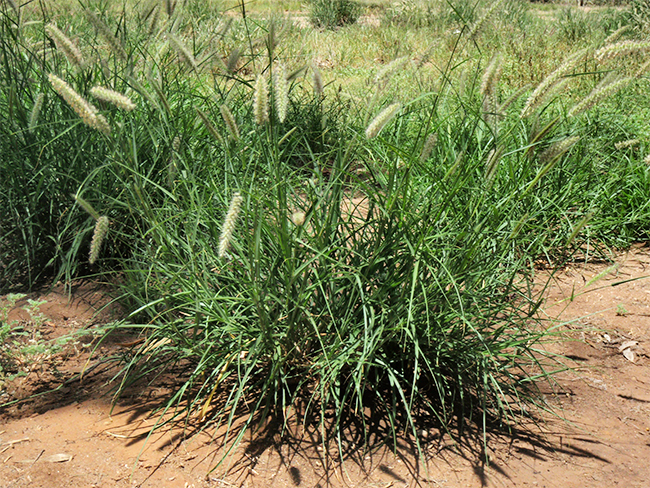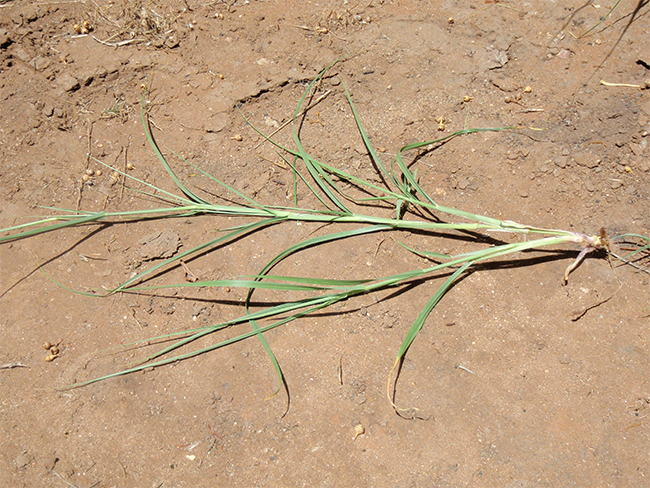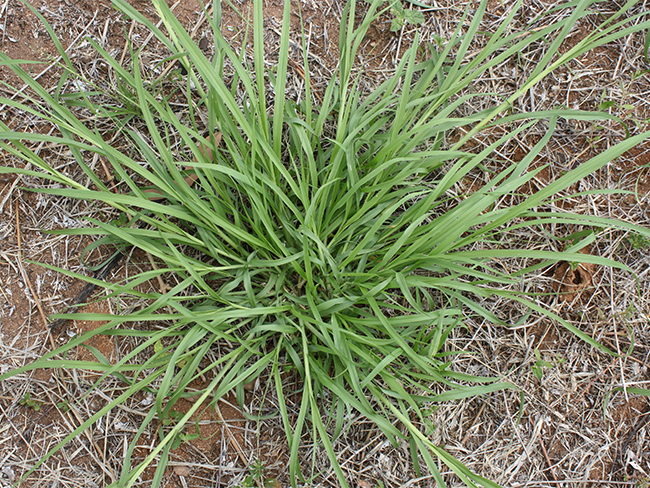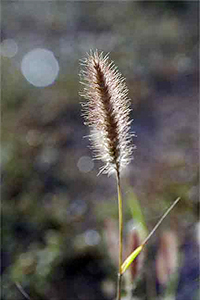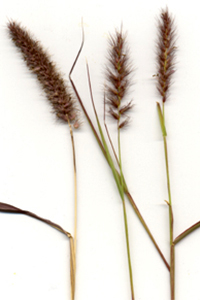Buffel grass
Scientific name: Cenchrus ciliaris and C. pennisetiformis
Declaration status: Declared weed for management in the Northern Territory (NT)
Read the buffel grass declaration fact sheet DOCX (65.8 KB).
Read the buffel grass management strategy: Central Australia 2024 - 2030 PDF (1.7 MB).
Buffel grass has a weed management guide PDF (3.5 MB) with more information.
Buffel grasses are native to tropical and sub-tropical Africa, India and Indonesia.
They are used in Australia as a drought resistant pasture grass that thrives in sandy soils.
Buffel grasses have become naturalised in areas near Alice Springs and in western Queensland.
For more information get the buffel grass identification fact sheet PDF (4.9 MB).
Read about the buffel grass technical working group and buffel grass weed advisory committee.
Impact
Originally planted for pasture and dust control in central Australia, buffel grass now imposes economic costs through the need to manage fire risks and to protect biodiversity assets and infrastructure. Some pastoralists are also concerned that productivity of buffel grass dominated pastures can decline in the longer term.
Buffel grass can have all of the following impacts:
- supports intense fires
- quick regrowth supports frequent subsequent fires
- intense frequent fires impact many native trees
- fire reduces the overstory and topfeed in woodlands
- threatens riparian systems and high conservation value aquatic ecosystems
- can inhibit the abundance of native ground layer plants
- reduces biodiversity and diversity of livestock diets
- may impede overland waterflow.
Identification
You should use this as a guide. There may be other plants or weeds that look similar.
- perennial grass up to one metre high, forming dense tussocks with erect stems
- leaves are bluish-green and may have a reddish tinge when young
- leaves are up to 30cm long and 1.3cm wide, hairy, flat or folded with pointed tips
- flowers have one to four spikelets and are purplish in colour
- seed heads are a hairy, cylindrical spike up to 15cm long and 2cm wide.
If you are unsure, contact the Weed Management Branch.
Spread
Buffel grass spreads readily where the soils have a crumbly or loose, soft surface, such as those in Central Australia. In southern regions of the NT buffel grass can be spread by grass seeds on people, animals, machinery and equipment.
Control
Chemical control
There are several chemical options available to control buffel grass.
The two main options are flupropanate and glyphosate. These can be used separately or together depending on the density and growth stage of plants.
Glyphosate is only effective when there is active plant growth so that the chemical can be absorbed through leaf tissue. However glyphosate does not control residual seed banks in the soil.
Flupropanate is a slow acting residual herbicide which is absorbed through the plant root system.
It can be applied at any stage of plant growth including when plants have hayed off. It controls both parent plants and residual seed banks.
Non-chemical control
Hand pulling and grubbing
Weeds, including their roots, are physically pulled out of the ground by hand or using hand tools. This is an effective method of control for individual weeds and recent outbreaks that haven’t released seeds yet, but it requires a lot of labour.
Slashing
A brush-cutter, slasher or mower are used to cut weeds off above the ground level. This can be effective in suppressing flower and seed development.
Slashing or mowing may increase rates of buffel grass growth, but cutting prior to chemical control of regrowth can reduce costs and increase effectiveness.
Fire
Fire as a management technique is most effective when it is used together with other methods.
Buffel grass is extremely fire tolerant. Controlled burns as soon as possible after curing may reduce potentially dangerous high fuel loads, but this strategy can be risky and should only be undertaken with advice from fire authorities.
Burning may also be used to get rid of rank growth prior to applying herbicide to regenerating tussocks, but soil moisture must be sufficient to enable regrowth, and wind and temperature should be low. This integrated approach to management will reduce herbicide requirements and provide better kill rates.
Fire is not a recommended tool on its own for reducing or eliminating buffel grass.
Prevention
You can prevent the spread of buffel grass by doing all of the following:
- map infestations to help develop a management plan
- control minor infestations, isolated outbreaks or seedlings first
- designate wash down areas and actively work to prevent contamination of clean areas
- suppress seed production through chemical control, slashing and, in some situations, grazing
- remove existing tussocks and prevent seedling establishment within buffer zones by chemical, mechanical or physical means
- eradicate isolated plants and outbreaks
- actively contain major occurrences
- limited suppression in a pasture may be achieved through strategically timed grazing
- monitor areas that you have treated and watch for re-infestations.
Give feedback about this page.
Share this page:
URL copied!
